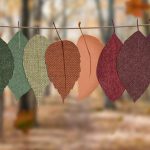To understand fabric dye types and prevent bleeding, start by matching dyes to fibers. Fiber reactive dyes work well with cotton, while acid dyes suit silk and wool. For synthetics like polyester, use disperse dyes. It’s essential to test for colorfastness before washing, and rinse your fabrics to remove excess dye. Proper care, including washing in cold water, helps maintain vibrant colors. There’s plenty more to explore about dye types and techniques that can enhance your textile projects.
Table of Contents
Key Takeaways
- Choose the right dye type based on fabric fibers for optimal color adherence and to prevent bleeding.
- Test fabric for colorfastness using water, bleach, and sunlight methods before washing.
- Use proper fixation techniques and rinse dyed fabrics in cold water to remove excess dye.
- Wash newly dyed fabrics separately for the first few washes to minimize the risk of bleeding.
- Follow best care practices, like washing in cold water and drying in shaded areas, to maintain dye vibrancy.
Overview of Fabric Dye Types
When it comes to dyeing fabrics, understanding the different types of dyes can make all the difference. Each type serves unique purposes and works best with specific fabric materials.
For instance, fiber reactive dyes bond chemically with cellulose fibers, making them ideal for cotton and linen. On the other hand, acid dyes are perfect for protein fibers like silk and wool, creating vibrant colors that last.
Direct dyes are easy to use but may not be as durable, while disperse dyes are excellent for synthetic fabrics like polyester.
Knowing these distinctions allows you to choose the right dye for your project, ensuring vibrant colors and reducing the risk of bleeding.
The Importance of Dye Classification
Understanding dye classification is essential for achieving the best results in your fabric projects.
Different types of dyes work better with specific fibers, so knowing their compatibility can save you time and effort.
Types of Dyes
Dye classification plays an essential role in the textile industry, influencing everything from colorfastness to application methods. Understanding the different types of dyes—reactive, acid, disperse, and vat—helps you select the right one for your fabric.
Reactive dyes bond chemically with fibers, offering vibrant colors and excellent wash fastness. Acid dyes, typically used for protein fibers, provide bright hues but may require special handling.
Disperse dyes work well with synthetic fibers, ensuring deep coloration but often needing high heat for application. Finally, vat dyes are known for their color stability and resistance to fading, making them ideal for denim.
Fiber Compatibility Factors
Choosing the right dye for your fabric isn’t just about color; it also hinges on fiber compatibility. Different fibers absorb dyes in unique ways, so understanding these differences is essential.
For instance, natural fibers like cotton and wool often require reactive or acid dyes, while synthetic fibers like polyester need disperse dyes. If you use the wrong dye, you risk uneven coloring or fabric damage. Always check the dye label to confirm it matches your fabric type.
Additionally, consider how the dye interacts with blending fibers; mixed fabrics may need multiple dye types for uniform results. By prioritizing fiber compatibility, you’ll achieve vibrant, long-lasting colors without the worry of bleeding or fading.
Understanding Dye Solubility
While exploring the world of fabric dyes, you’ll quickly realize that solubility plays an important role in how well a dye adheres to a material.
Solubility refers to how well a dye dissolves in a solvent, typically water. If a dye is highly soluble, it’ll penetrate the fibers more effectively, allowing for vibrant colors. Conversely, low solubility can result in uneven application and increased bleeding risks.
Solubility impacts dye effectiveness: highly soluble dyes yield vibrant colors, while low solubility can lead to uneven application and bleeding.
When dyeing fabric, it’s vital to take into account the type of dye you’ll use based on its solubility. For example, reactive dyes work best with water, while disperse dyes require specific conditions to dissolve.
Understanding solubility guarantees you achieve the desired color intensity and longevity without unwanted bleeding in your fabric.
Fiber Compatibility: Matching Dyes With Fabrics
When you’re ready to dye fabric, understanding fiber compatibility is essential for achieving the best results. Different fibers absorb dyes in unique ways, so matching the right dye with the fabric type is vital.
For instance, natural fibers like cotton and wool typically work well with fiber-reactive or acid dyes. On the other hand, synthetic fibers such as polyester require disperse dyes to achieve vibrant colors.
If you mix dyes and fabrics incorrectly, you may end up with uneven coloring or fading. Always check the dye’s label for compatibility information, and don’t hesitate to test on a small fabric piece first.
Techniques for Preventing Dye Bleeding
To keep your dyed fabrics looking vibrant, it’s essential to test for colorfastness before washing.
You should also master proper dye fixation techniques to guarantee the colors stay locked in.
Let’s explore effective methods that can help you prevent dye bleeding.
Colorfastness Testing Methods
Since ensuring that fabric retains its vibrant colors is essential, you’ll want to familiarize yourself with colorfastness testing methods.
These tests help you determine how well a fabric resists fading and bleeding when exposed to various conditions. Here are three effective methods you can try:
- Water Test: Dampen a white cloth and rub it against the fabric. If color transfers, the fabric may bleed when washed or exposed to moisture.
- Bleach Test: Apply a small amount of diluted bleach to an inconspicuous area. If the color fades considerably, it indicates poor colorfastness.
- Sunlight Test: Place the fabric in direct sunlight for several hours. If you notice color change, it shows the fabric may not withstand UV exposure.
Proper Dye Fixation Techniques
Colorfastness testing is just the first step in ensuring your fabric remains vibrant and true to its original hue.
To prevent dye bleeding, you need to employ proper dye fixation techniques. Start by choosing the right dye for your fabric type; some dyes bond better than others.
After dyeing, rinse your fabric in cold water to remove excess dye. Using a fixative like salt or vinegar can enhance dye adherence; just follow the instructions for your specific dye.
Heat-setting your fabric in a dryer or with an iron can also help lock in colors.
Finally, always wash your dyed fabric separately for the first few washes to minimize any potential bleeding. These steps will keep your colors intact and looking fresh!
Acid and Basic Dyes: Applications and Characteristics
While many dyes exist for various applications, acid and basic dyes stand out due to their unique characteristics and suitability for specific fabrics.
Acid dyes are primarily used for protein fibers like silk and wool, providing vibrant colors and excellent wash fastness. On the other hand, basic dyes work well on acrylics and other synthetic fibers, offering bright hues but may lack the same level of durability.
Here are a few key points to take into account:
- Application: Acid dyes excel in acidic conditions, while basic dyes thrive in alkaline environments.
- Color Vibrancy: Acid dyes generally yield richer colors compared to basic dyes.
- Fabric Compatibility: Match the dye type with the fabric for best results and to prevent bleeding.
Direct vs. Reactive Dyes: A Comparative Analysis
When it comes to fabric dyeing, direct and reactive dyes offer distinct advantages and applications that cater to different materials and desired outcomes.
Direct dyes bond easily with cellulosic fibers like cotton, providing vibrant colors. They’re user-friendly and often require just a simple dye bath. However, they can fade over time and might bleed during washing.
On the other hand, reactive dyes create a strong chemical bond with fibers, resulting in excellent colorfastness. They work best on cotton and other cellulose-based fabrics, making them ideal for projects requiring durability.
While reactive dyes often need more complex application processes, their longevity and resistance to bleeding make them a preferred choice for many.
Ultimately, your choice depends on the fabric and the desired results.
Natural Dyes: Sustainable Choices for Fabric
As you explore options for fabric dyeing, natural dyes stand out as a sustainable choice that not only enhances your textiles but also supports eco-friendly practices.
These dyes, derived from plants, minerals, and insects, offer a unique palette while promoting environmental responsibility.
Natural dyes, sourced from plants, minerals, and insects, provide a distinctive color palette while fostering eco-conscious practices.
Here are three key benefits of using natural dyes:
- Biodegradable: Unlike synthetic dyes, natural dyes break down easily, reducing environmental impact.
- Non-toxic: Natural dyes are generally safer for both you and the environment, minimizing harmful chemical exposure.
- Unique Colors: Each dye source yields distinct shades, allowing for one-of-a-kind creations that can’t be replicated with synthetic options.
Choosing natural dyes isn’t just about aesthetics; it’s a commitment to a more sustainable future in fabric dyeing.
The Advantages of Synthetic Dyes
When you choose synthetic dyes, you’re opting for vibrant colors that stay consistent wash after wash.
These dyes also enhance the durability of your fabrics, making them resistant to fading and wear.
With synthetic options, you get both beauty and longevity in your textiles.
Vibrant Color Consistency
Synthetic dyes offer vibrant color consistency that natural alternatives often struggle to match. When you choose synthetic dyes, you’re guaranteeing that your fabrics maintain a uniform and brilliant hue throughout their lifespan.
This consistency is vital for various applications, whether you’re designing clothing or creating home textiles.
Here are three key advantages of synthetic dyes regarding color consistency:
- Uniformity Across Batches: Synthetic dyes guarantee the same color results in every dye lot, minimizing discrepancies.
- Wide Color Range: You can achieve a broader spectrum of colors with synthetic dyes, allowing for more creative designs.
- Fade Resistance: These dyes resist fading better than many natural options, keeping your fabrics looking vibrant longer.
With synthetic dyes, you can confidently produce eye-catching textiles that stand the test of time.
Enhanced Durability Features
While many factors contribute to the longevity of your textiles, the durability offered by synthetic dyes stands out considerably.
These dyes excel in resisting fading, allowing your fabrics to maintain their vibrant colors even after multiple washes. You’ll find that synthetic dyes bond more effectively with fibers, creating a strong, lasting color that withstands exposure to sunlight and harsh detergents.
Moreover, synthetic dyes are often resistant to water and stains, making them ideal for everyday wear.
This means less worry about accidental spills or moisture damaging your favorite items. By choosing fabrics dyed with synthetic options, you’re investing in textiles that not only look great but also stand the test of time, ensuring you get the most out of your purchases.
Best Practices for Fabric Care and Dye Longevity
To keep your fabric looking vibrant and prolong the life of its dye, adopting a few simple care practices is crucial.
By following these best practices, you can maintain your fabric’s color and quality for years to come:
- Wash in Cold Water: Use cold water to prevent dye bleeding. Hot water can cause colors to fade and bleed into one another.
- Turn Garments Inside Out: Before washing, turn your clothes inside out to minimize friction and exposure to sunlight, which can fade colors.
- Avoid Direct Sunlight: When drying, avoid hanging your fabrics in direct sunlight. Instead, opt for a shaded area to help preserve the dye’s vibrancy.
Following these tips will help guarantee your fabrics remain as beautiful as the day you bought them.
Frequently Asked Questions
How Can I Test Dye Fastness at Home?
Imagine a rainbow after rain. To test dye fastness at home, dampen a white cloth, press it against your dyed fabric, and check for color transfer. If it bleeds, your dye needs a little help.
What Are the Signs of Dye Bleeding on Fabric?
You’ll notice dye bleeding on fabric if you see color transfer onto other materials, fading of the original shade, or stained areas after washing. Check for excess dye in water during laundering; it’s a clear sign.
Can I Mix Different Dye Types for One Fabric?
You can mix different dye types for one fabric, but be cautious. Some dyes may react unpredictably, affecting color and quality. Always test a small area first to guarantee you achieve the desired result.
How Do Environmental Factors Affect Dye Performance?
Environmental factors like temperature, humidity, and sunlight can greatly affect dye performance. You’ll notice that extreme conditions can cause fading or uneven coloring, so it’s essential to take into account these elements when planning your dyeing project.
What Is the Best Way to Store Dyed Fabrics?
Storing dyed fabrics is like tucking treasures into a safe. You should keep them in a cool, dark place, folded gently, away from moisture and sunlight, to preserve their vibrant colors and prevent fading.
- Understanding Fabric Dye Types to Prevent Bleeding - June 10, 2025
- My New Red Shirt Bled Everywhere: What Now? - June 10, 2025
- Does a Retayne-Type Product Stop Fabric Bleeding Effectively? - June 10, 2025







